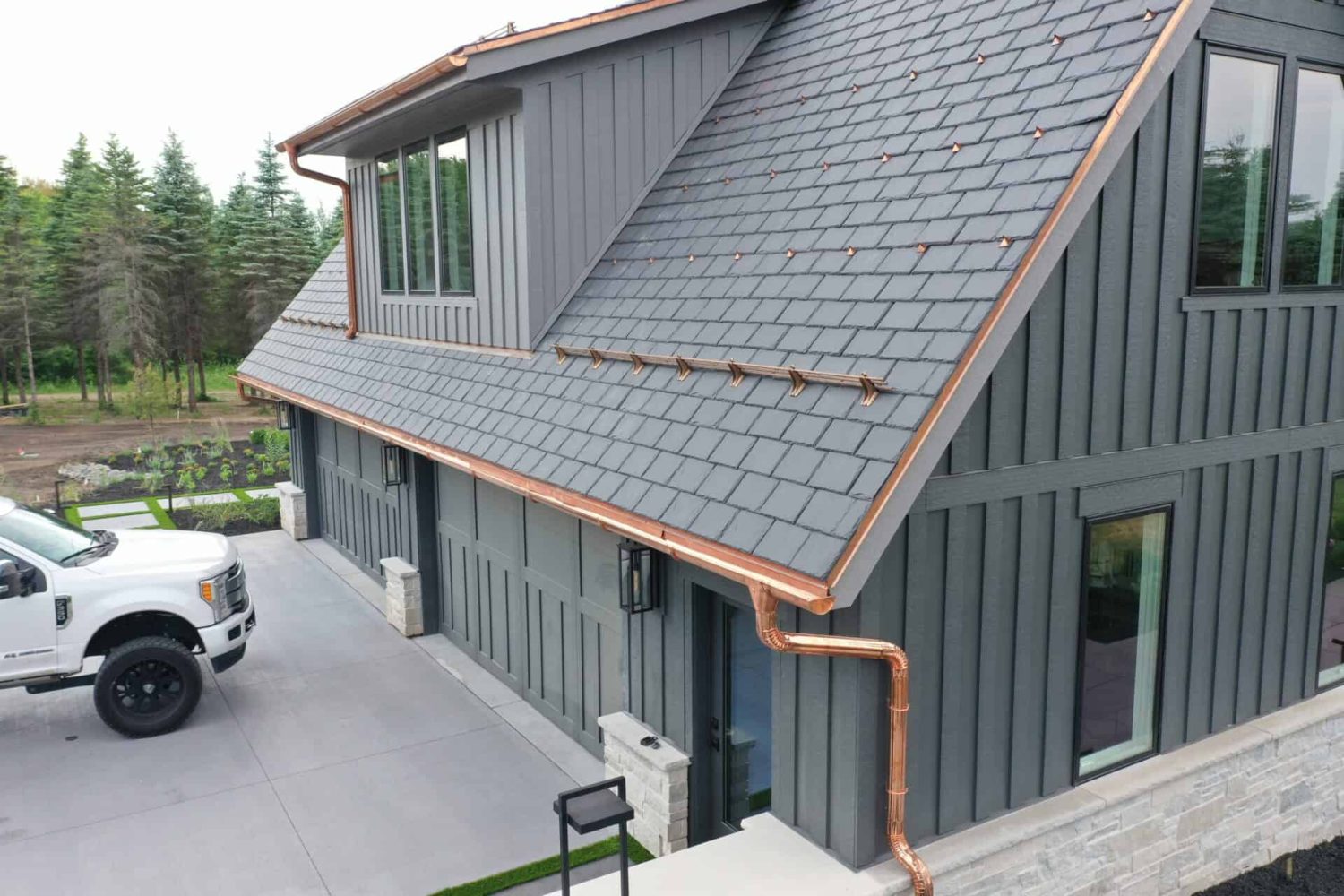Finding the right siding means looking for something that is not only durable but also looks good and fits the style of your home. In today’s market there is a growing demand for strong and attractive siding that can fulfil both of these needs. Two popular siding material options are fiber cement and vinyl. Let’s take a look at fiber cement siding vs. vinyl siding to see what is the better investment for your home, especially in regards to climate and long-term value.
Vinyl Siding at a Glance
Vinyl siding is primarily made up of polyvinyl chloride (PVC), which is a durable plastic. There are several additives to the PVC that help make it both strong and flexible. These additives include pigments that give the material its color and also protect it from UV light and fading. Other additives and stabilizers help make the product flexible, but not brittle as well as protecting it from prolonged sun exposure.
Vinyl siding was first introduced to the construction market in the US in the 1950’s and was an inexpensive siding option throughout the 1950’s and 60’s. Advancements in construction materials, especially with PVC plastics, making them more durable, weather resistant and colorfast. These advancements coupled with expanding color options has made the product increasingly popular.
Vinyl siding is a versatile product coming in a wide range of colors, textures, and panel styles that allow for a breadth of style options to fit many different types of homes. This versatility and affordability make it a popular siding choice.
The estimated lifespan for vinyl siding ranges from 20 to 40 years with a typical lifetime limited warranty of 50 years.
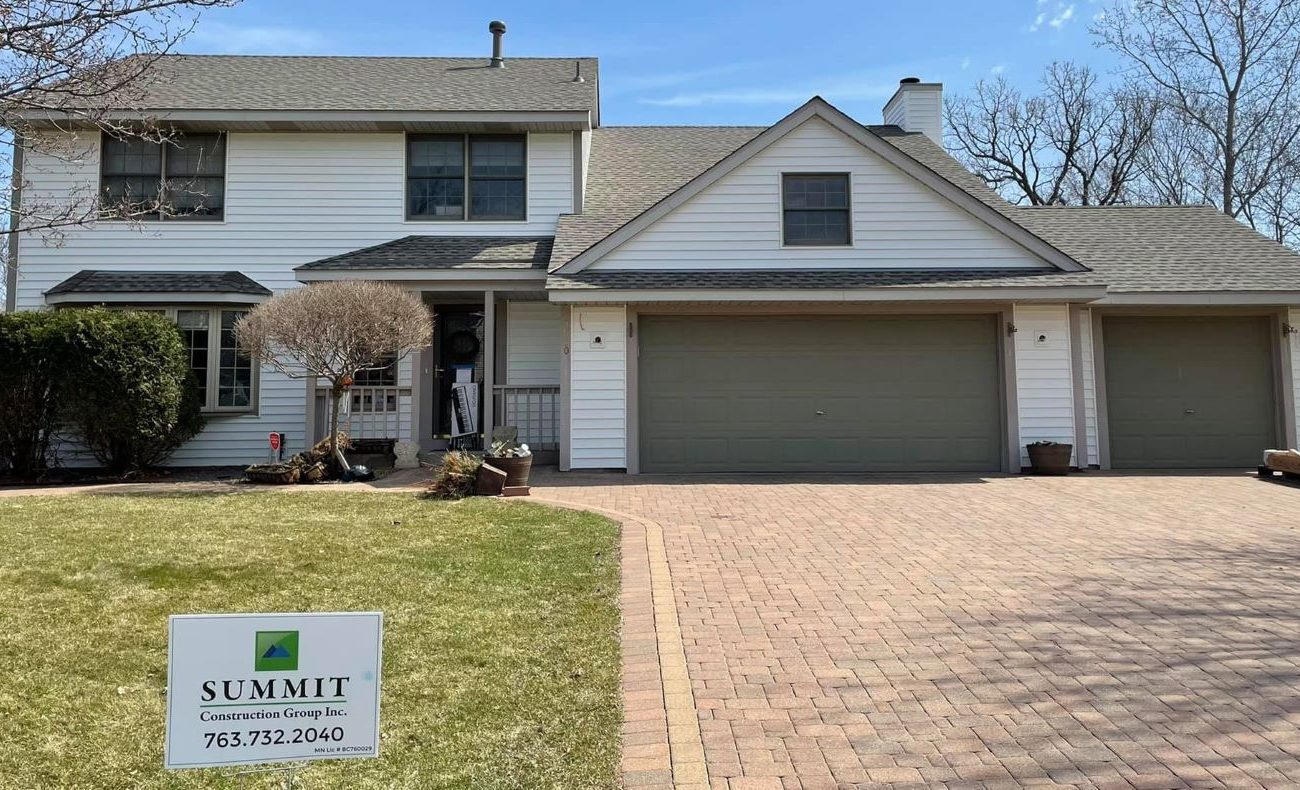
Newly added vinyl siding on a home in Minnetonka
Fiber Cement Siding at a Glance
Fiber cement siding is made from a mixture of Portland cement, sand, and cellulose or wood pulp fibers that are combined with water to make a slurry. This is then formed into panels that are cured under high pressure to create a strong and durable siding material.
Fiber cement was first invented in the early 1900’s but the toxic substance, asbestos being used instead of wood pulp or cellulose fibers. It was not until the 1980s, when James Hardie introduced the modern makeup of the product, did it start to be used more widely. James Hardie is still one of the most popular brands of fiber cement on the market today.
Fiber cement is a high-end product that mimics the aesthetics of wood without the high maintenance of wood. It is also one of the most durable and long-lasting siding materials with a lifespan between 50 to 100 years. It does, however, have higher material and installation costs than vinyl.
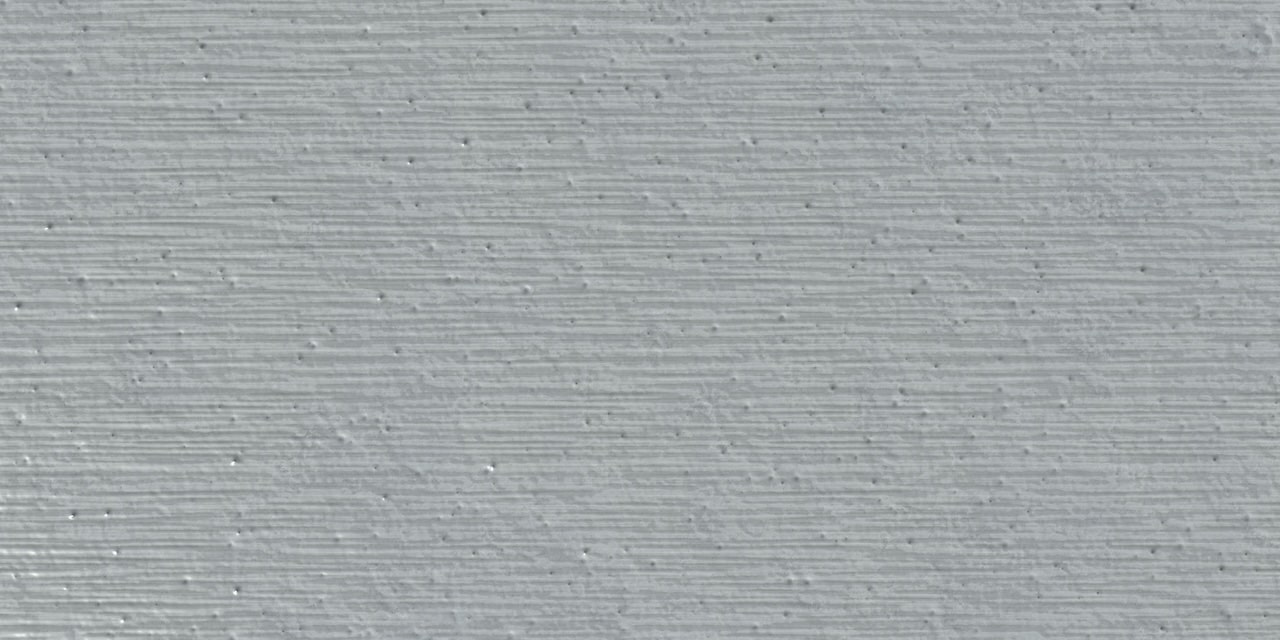
Close-up of fiber cement siding panel from James Hardie
Pros and Cons Breakdown
To dig further into our look at fiber cement siding vs. vinyl, let’s break down both vinyl and fiber cement siding pros and cons for a better siding material comparison.
The Pros of Vinyl Siding
Top vinyl siding benefits include its easy installation and low cost. It is a lightweight and flexible material that does not require painting, making installation a good DIY-friendly project.
The Cons of Vinyl Siding
One of the biggest downsides of vinyl siding is how it performs in extreme temperatures and harsh weather. Exposure to more severe conditions can cause vinyl siding to fade and crack. It is also both less impact-resistant and fire-resistant in comparison to fiber cement.
Read more: Why Hardie Board Siding Is a Top Choice for Homeowners
The Pros of Fiber Cement Siding
When it comes to durable home siding, fiber cement fits the bill. It is one of the strongest and most durable siding materials on the market. If properly installed and maintained it can last over 50 years.
Contributing to its longevity is its ability to hold up under extreme temperatures and harsh weather, including hail. It is also both a pest and fire-resistant siding.
For visual appeal, the material also has the flexibility to be either painted or installed pre-colored.
The Cons of Fiber Cement Siding
On the downside, fiber cement is heavier and more difficult to install in comparison to vinyl and it comes with a higher initial cost. It also requires occasional repainting if not bought pre-finished.
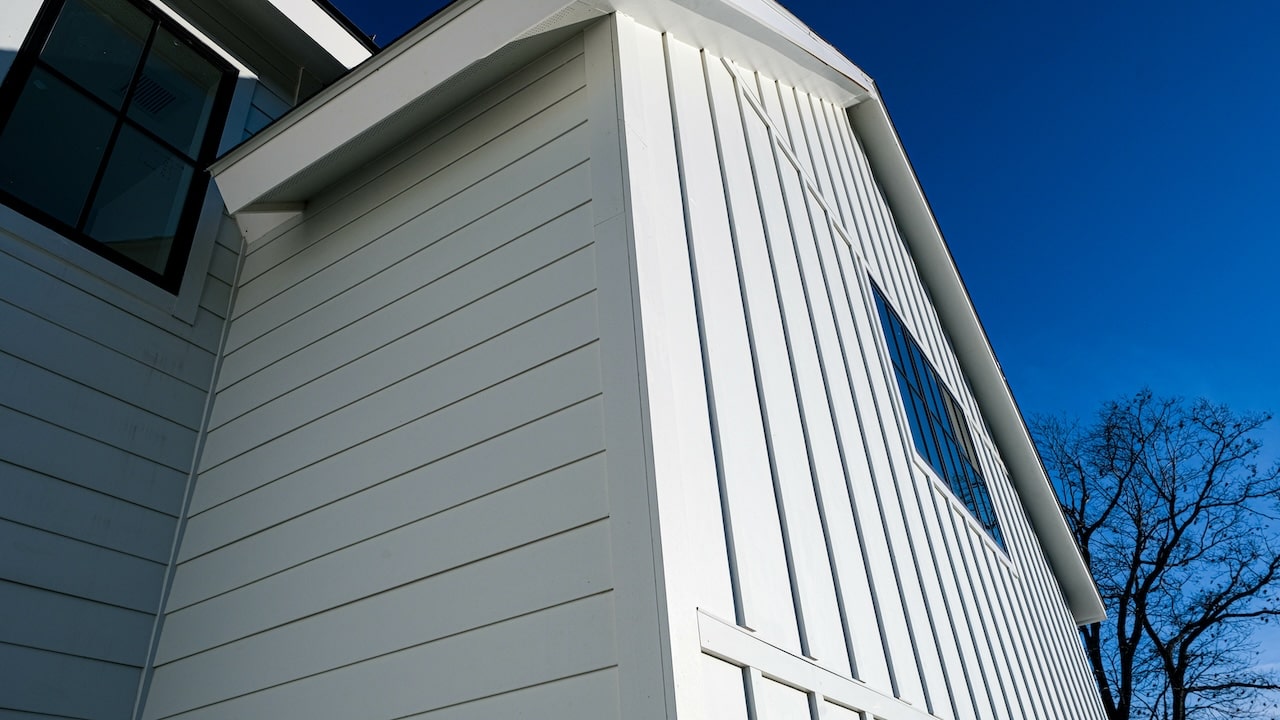
James Hardie fiber cement siding
Climate Considerations: Minnesota-Ready Siding
If you are looking for a home exterior renovation, Minnesota has a climate that needs to be considered in your choice of materials. Siding in cold climates means it will experience freezing temperatures, snow, and humidity. All of which can affect siding durability. Vinyl can warp in high heat and crack in extreme cold. Fiber cement siding, on the other hand, is a moisture-resistant siding built to resist temperature fluctuations, and as an added bonus, pests too.
No matter what type of material you choose, however, when it comes to Minnesota siding installation, where climate plays a large factor in durability, using a professional installer with expertise in cold climate installation is important.
Read more: The Ultimate Guide to Siding Installation: What Homeowners Should Know
Maintenance and Longevity
Long-term maintenance is a factor for any home improvement decision. It takes time, money, and effort to maintain your home, making low-maintenance exterior options a factor in deciding what materials are right for you. Proper siding maintenance also affects your siding’s longevity. It stands to reason that the better cared for your siding is, the longer it lasts.
Vinyl requires periodic cleaning with little upkeep overall. Patching or full panel replacement may be required if some portions of the siding sustain damage.
Fiber cement’s durability extends to its upkeep. It is manufactured to sustain minimal rot or any risk of insect damage. It does, however, require repainting every 10 to 15 years.
Weighing these maintenance requirements of fiber cement siding vs. vinyl does play into finding the material that is best for you.
Appearance and Curb Appeal
Your siding not only protects your home’s exterior, it’s also a big factor in determining your home’s appearance and overall curb appeal. If you are looking for curb appeal siding upgrades, both fiber cement and vinyl come in a range of styles and finishes that can complement your home décor preferences and aesthetics.
Fiber cement is a more premium product that delivers a wood-like look for your home. Its durability and longevity can also enhance the value of your home. Vinyl, however, promises a faster installation process with vast color options that can give you a custom look that will fit your style.
Read more: The Role of Windows in Enhancing Curb Appeal
Cost Comparison and Return on Investment
Fiber cement siding is more expensive than vinyl in both the initial cost of the materials and the labor involved with installation. As a heavier material, fiber cement requires a more complex installation process, which takes time and raises the cost to install fiber cement siding. However, fiber cement can have a larger return on investment as a more durable material that will last longer, on average, than vinyl.
If you are looking for eco-friendly siding options, fiber cement also offers up a higher thermal resistance than vinyl, which lowers heat transfer and acts to further insulate your home and bring down your energy costs. Vinyl does come with an insulated version with foam backing, but it still has a lower thermal resistance than fiber cement, making it superior when it comes to energy efficiency. This also adds to a higher ROI for fiber cement as it can help reduce your energy bills.
In the Minnesota real estate market, fiber cement siding can be a value-add to your home as it is a material that can withstand the extremes in Minnesota weather conditions as well as help lower your heating and cooling costs.
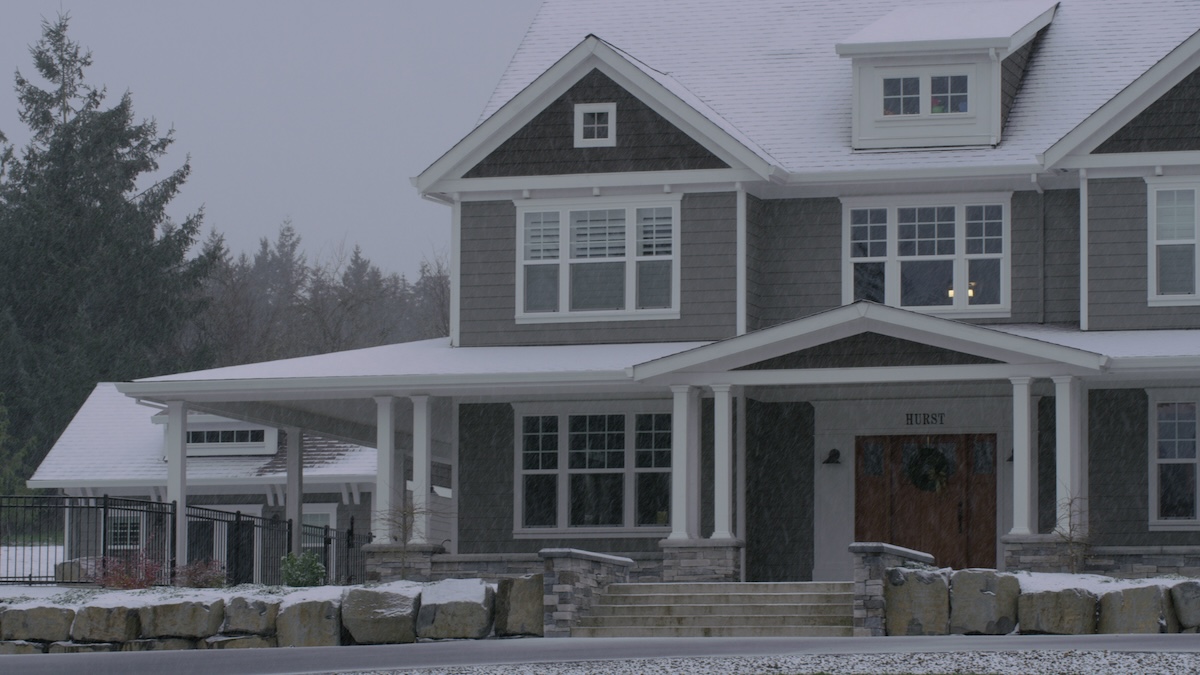
James Hardie fiber cement siding
Fiber Cement Siding Vs. Vinyl: Which is Right for Your Home?
Overall, choosing the right siding for your home will rely on your budget, your long-term home plan, the climate you are located in, and the desired look you have for your home. Contact Summit Construction Group to schedule a consultation with a siding expert who can help you make a decision about the best siding options that are tailored to your home and climate.

